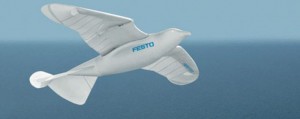Leonardo da Vinci was one of the first people to truely dive into the depths of trying to create and design the ornithopter, a machine shaped like an aircraft that is held aloft and propelled by wing movements. He focused much of time and effort trying to sketch a design where the aircraft would be powered by human movement. As engineering advanced and technology became more innovative, many aviation enthusiasts began trying to build ornithopters that were not powered by humans at all.
One of the first people to successfully build an unmanned ornithopter was a 19th century French engineer named Gustave Trouvé. He created his model of the unmanned ornithopter by implementing twelve gunpowder charges attached to the belly of the aircraft that would fire in succession allowing the wings to flap. The aircraft flew for only 70 meters, but Trouvé’s desgin proved to the scientific community that an unmanned ornithopter could be built.

Unmanned Ornithopter built by Gustave Trouvé
Fast foward about 140 years from the time of Trouvé’s first launch of his ornithopter, and we now find that technology has allowed engineers to build ornithopters that actually look like the birds that original ornithopters were trying to mimic since the idea first came to life back in the days of the Renaissance and Leonardo da Vinci. A leading company in the field of automation called Festo, has developed a robotbird, that can take-off, fly, and land without any human interaction whatsoever. The robobird, which was insipired by the herring gull, or what we know as a sea gull, has tremendous agility and aerodynamics that allow it to move in the manner that a real bird would The design of the Smartbird is a huge step in the field of biomimicry because the bird is powered solely on a microchip processor that can scan its surrounding and environments to let the bird know where to fly. This type of automation is could one day possibly be used for military purposes or in search and rescue missions. The possibilities are endless.

Festo Smartbird
Sources:
2 Comments
Lorena Barba posted on October 13, 2011 at 1:38 pm
Hi Will — Smartbird is fascinating; there is a video on YouTube that shows it flying in the middle of a big public park event.
I’m not sure you meant “powered” by a microchip; surely the power comes from a battery!
Shahil Patel posted on October 14, 2011 at 3:22 pm
thats soo cool. I definetly want to get one!